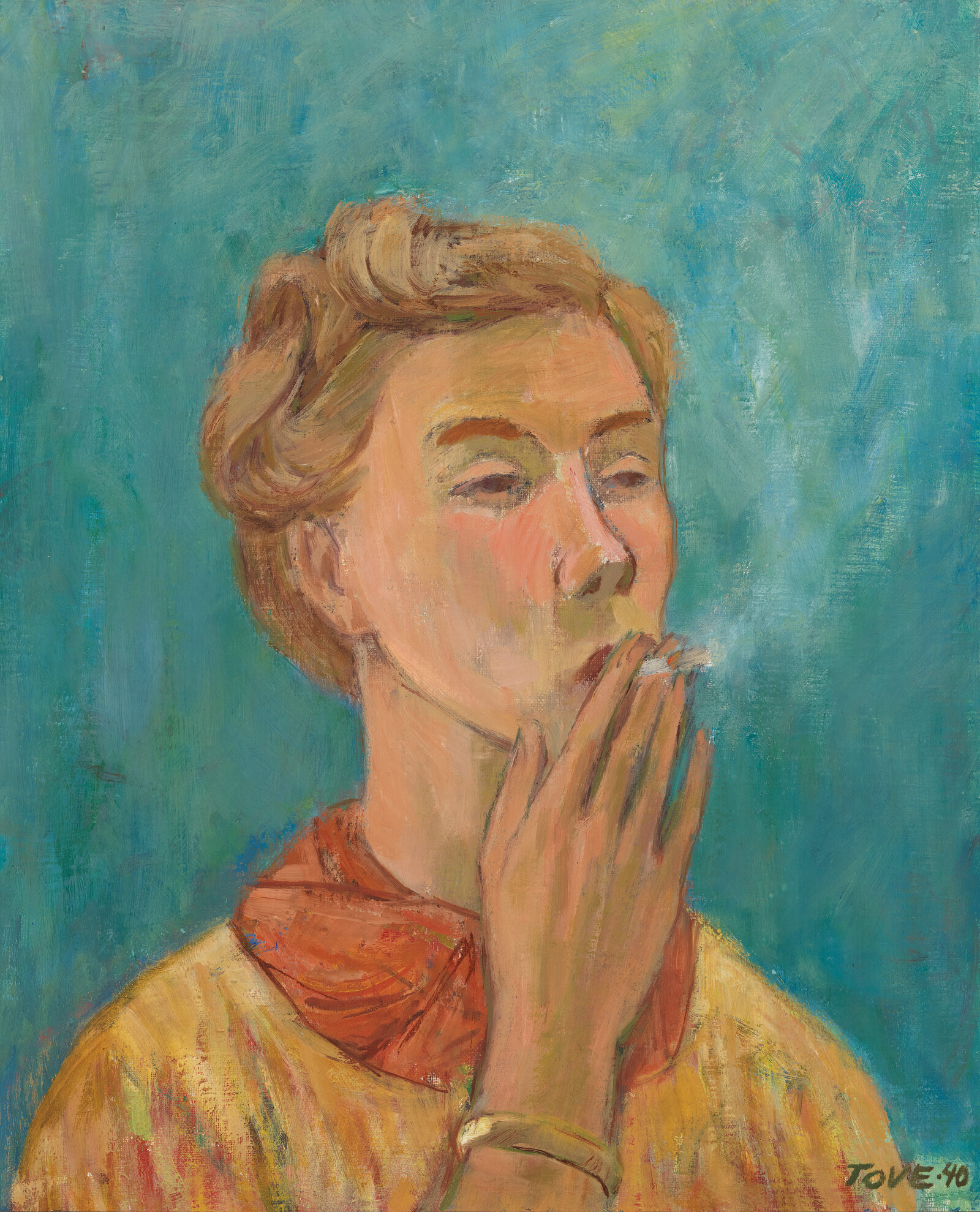Tove
June 22–September 3, 2023
Rådhusgata 17
0158 Oslo
Norway
Hours: Tuesday–Friday 12–5pm,
Saturday–Sunday 12–4pm
T +47 476 87 355
post@tegnerforbundet.no
From June 22–September 3, 2023, Tegnerforbundet/The Norwegian Drawing Center presents the first solo exhibition with Tove Marika Jansson (Finland-Swedish, 1914–2001) in Norway. The exhibition is a collaboration with Moomin Characters Ltd Oy and will show a selection of drawings and paintings, with a focus on Jansson’s self-portraits. The exhibition is curated by Lene Fjørtoft and Hilde Lunde.
The artist Tove Jansson
Tove Marika Jansson had an impressive career as a writer and artist. She was active for over 70 years, and also worked as a cartoonist, illustrator and caricaturist. She is best known for having created the Moomin characters, but the exhibition Tove shows that her creativity extended far beyond this universe. She was a versatile and productive artist who constantly experimented and sought new forms of expression. Tegnerforbundet aims to give the public an insight into Jansson’s diverse artistic production. The drawings and paintings depict various themes, including family members, travels abroad, illustrations, commissions and imaginative doodles, all in her distinctly personal style. The self-portraits are a central part of the exhibition, and they show an artist who not only experimented with form and expression, but also took control of her own narrative.
Family and upbringing
Tove Jansson grew up in an artist’s studio in Helsinki, where both her parents worked. Viktor Bernhard “Faffan” Jansson (1886–1958) was an important and admired sculptor. Signe “Ham” Hammarsten-Jansson (1882–1970) was an artist and illustrator. In 1913 they married, and the following year Tove was born. Tove had two younger brothers, Per Olov Jansson (1920–2019) and Lars Jansson (1926–2000). All three became artists; Per Olov was a photographer and Lars a writer and cartoonist in the Moomin universe.
Faffan and Ham created a home where art was an integral part of family life, and Tove’s childhood experiences and family background undoubtedly influenced her artistic career. The family home was a studio and a workplace, with no distinction between work and leisure. Tove describes her childhood and adolescence in a community with freedom, responsibility, loyalty to family and harmony. Both parents, Ham and Faffan, played a significant role in Tove’s choice of career and development as an artist. Ham in particular had an impact on her in this regard. As an artist, woman and mother, Ham was an inspiring role model for Tove. Her importance for Tove’s career and development as an artist should not be underestimated, and it is important to recognize the example Ham modeled for Tove.
The exhibition at Tegnerforbundet displays a bronze sculpture made by Faffan of a young Tove, as well as several works by Ham depicting Tove in her early childhood. These works represent the Jansson family’s close relationships, as well as how the family influenced and shaped each other as members of a creative community. The works in the exhibition also reflect how Jansson interprets and uses members of her family as models.
Self-portraits
A recurring theme in Jansson’s oeuvre is self-portraits; drawings in pencil and charcoal, small sketches in diaries and letters, as well as large portraits in oil. Jansson never wrote an autobiography. The closest equivalent is the novel Sculptor’s Daughter (1969), which contains biographical content. It is the self-portraits that make up the artist’s own visual narrative. Several self-portraits are displayed in the exhibition. The earliest is from 1937 when she was 23 years old. In this early phase of her career, the self-portrait was a means of exploring and staging an artistic identity. The last self-portrait from 1975 is one of Jansson’s last works in oil.
The self-portrait was a means of experimenting with different styles and techniques. How Jansson portrayed herself was not a random process; it was an artistic assessment. The self-portraits reveal an artist who was both self-deprecating and serious, and they reflect the complexity of her personality. Through her self-portraits, she explored different identities, told personal stories and claimed her place in the art world.
The exhibition is supported by the Norwegian-Finnish Cultural Foundation.


